Rewiring of the phosphoproteome executes two meiotic divisions in budding yeast
- PMID: 38413836
- PMCID: PMC10987667
- DOI: 10.1038/s44318-024-00059-8
Rewiring of the phosphoproteome executes two meiotic divisions in budding yeast
Abstract
The cell cycle is ordered by a controlled network of kinases and phosphatases. To generate gametes via meiosis, two distinct and sequential chromosome segregation events occur without an intervening S phase. How canonical cell cycle controls are modified for meiosis is not well understood. Here, using highly synchronous budding yeast populations, we reveal how the global proteome and phosphoproteome change during the meiotic divisions. While protein abundance changes are limited to key cell cycle regulators, dynamic phosphorylation changes are pervasive. Our data indicate that two waves of cyclin-dependent kinase (Cdc28Cdk1) and Polo (Cdc5Polo) kinase activity drive successive meiotic divisions. These two distinct phases of phosphorylation are ensured by the meiosis-specific Spo13 protein, which rewires the phosphoproteome. Spo13 binds to Cdc5Polo to promote phosphorylation in meiosis I, particularly of substrates containing a variant of the canonical Cdc5Polo motif. Overall, our findings reveal that a master regulator of meiosis directs the activity of a kinase to change the phosphorylation landscape and elicit a developmental cascade.
Keywords: Cell Cycle; Kinases; Meiosis; Phosphorylation; Proteomics.
© 2024. The Author(s).
Conflict of interest statement
The authors declare no competing interests.
Figures

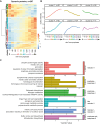


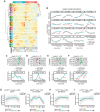

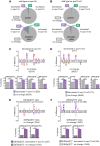


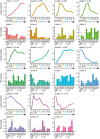

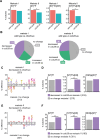


Similar articles
-
The budding yeast polo-like kinase Cdc5 regulates the Ndt80 branch of the meiotic recombination checkpoint pathway.Mol Biol Cell. 2011 Sep;22(18):3478-90. doi: 10.1091/mbc.E11-06-0482. Epub 2011 Jul 27. Mol Biol Cell. 2011. PMID: 21795394 Free PMC article.
-
Polo kinase Cdc5 is a central regulator of meiosis I.Proc Natl Acad Sci U S A. 2013 Aug 27;110(35):14278-83. doi: 10.1073/pnas.1311845110. Epub 2013 Aug 5. Proc Natl Acad Sci U S A. 2013. PMID: 23918381 Free PMC article.
-
Identification of 14-3-3 proteins, Polo kinase, and RNA-binding protein Pes4 as key regulators of meiotic commitment in budding yeast.Curr Biol. 2022 Apr 11;32(7):1534-1547.e9. doi: 10.1016/j.cub.2022.02.022. Epub 2022 Mar 2. Curr Biol. 2022. PMID: 35240051 Free PMC article.
-
Functions and regulation of the Polo-like kinase Cdc5 in the absence and presence of DNA damage.Curr Genet. 2018 Feb;64(1):87-96. doi: 10.1007/s00294-017-0727-2. Epub 2017 Aug 2. Curr Genet. 2018. PMID: 28770345 Free PMC article. Review.
-
Decoding the Nucleolar Role in Meiotic Recombination and Cell Cycle Control: Insights into Cdc14 Function.Int J Mol Sci. 2024 Nov 29;25(23):12861. doi: 10.3390/ijms252312861. Int J Mol Sci. 2024. PMID: 39684572 Free PMC article. Review.
Cited by
-
The functional organisation of the centromere and kinetochore during meiosis.Curr Opin Cell Biol. 2025 Jun;94:102486. doi: 10.1016/j.ceb.2025.102486. Epub 2025 Feb 26. Curr Opin Cell Biol. 2025. PMID: 40015116 Free PMC article. Review.
-
Quantitative proteomics and phosphoproteomics profiling of meiotic divisions in the fission yeast Schizosaccharomyces pombe.Sci Rep. 2024 Oct 4;14(1):23105. doi: 10.1038/s41598-024-74523-0. Sci Rep. 2024. PMID: 39367033 Free PMC article.
-
Distinct roles of spindle checkpoint proteins in meiosis.Curr Biol. 2024 Aug 19;34(16):3820-3829.e5. doi: 10.1016/j.cub.2024.07.025. Epub 2024 Jul 29. Curr Biol. 2024. PMID: 39079532 Free PMC article.
-
Deep learning-driven imaging of cell division and cell growth across an entire eukaryotic life cycle.bioRxiv [Preprint]. 2024 Apr 27:2024.04.25.591211. doi: 10.1101/2024.04.25.591211. bioRxiv. 2024. Update in: Mol Biol Cell. 2025 Jun 1;36(6):ar74. doi: 10.1091/mbc.E25-01-0009. PMID: 38712227 Free PMC article. Updated. Preprint.
-
Decoding protein phosphorylation during oocyte meiotic divisions using phosphoproteomics.Elife. 2025 Jul 17;13:RP104255. doi: 10.7554/eLife.104255. Elife. 2025. PMID: 40674131 Free PMC article.
References
-
- Argunhan B, Leung W-K, Afshar N, Terentyev Y, Subramanian VV, Murayama Y, Hochwagen A, Iwasaki H, Tsubouchi T, Tsubouchi H. Fundamental cell cycle kinases collaborate to ensure timely destruction of the synaptonemal complex during meiosis. EMBO J. 2017;36:2488–2509. doi: 10.15252/embj.201695895. - DOI - PMC - PubMed
MeSH terms
Substances
Grants and funding
LinkOut - more resources
Full Text Sources
Miscellaneous

